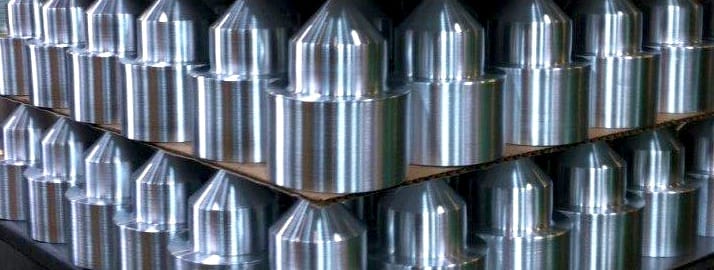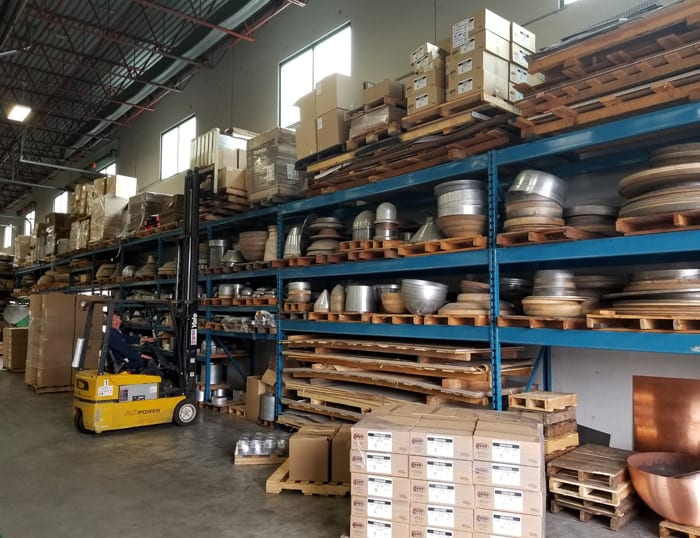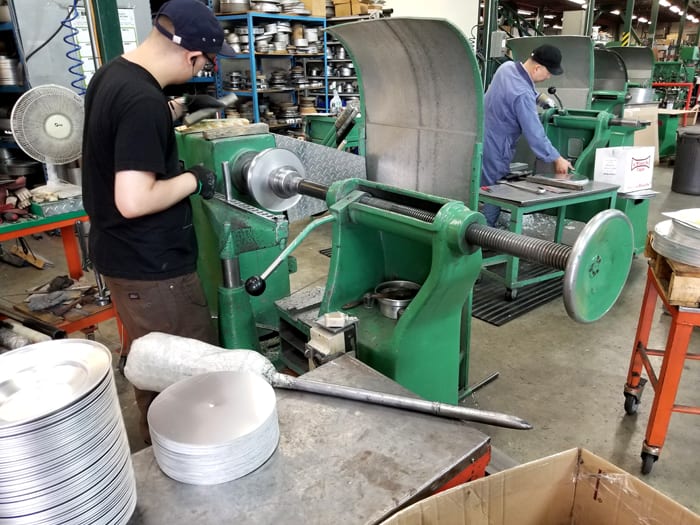Hmmm, April first has come and gone, and we've missed a chance to pretend we are now switching to selling electric squids powered by rabid honey badgers on brooms. To compensate for that disappointment here's an overview of the best April first stories. Underwater Basketweaving This is a new course where students explore the ancient […]

Metal Spinning Field Trip
We've been researching a manufacturer for a shiny new product we are working on (shhh, don't tell anyone and stay tuned for the reveal!). What we have been looking for is a metal spinner. Metal spinning, also known as spin forming, spinning, or metal turning most commonly, is a metalworking process by which a disc of metal is rotated at high speed and formed into an axially symmetric part. Spinning can be performed by hand or by CNC lathe.
 After doing lots and lots (and some more!) of internet browsing we came across Sieg’s Manufacturing (pronounced /seɪdʒ/). It is a family-operated shop that has been in business for more than 40 years and is located in Langley, British Columbia. It is one of only a few companies on the west coast who spin metal, serving most of Western Canada and the north western quadrant of USA. Being the closest manufacturer to us other than a random Hutterite colony in the middle of nowhere, it was worth a flight to Vancouver to check them out. So our emissary hopped on a plane for a day trip and brought back some stories.
After doing lots and lots (and some more!) of internet browsing we came across Sieg’s Manufacturing (pronounced /seɪdʒ/). It is a family-operated shop that has been in business for more than 40 years and is located in Langley, British Columbia. It is one of only a few companies on the west coast who spin metal, serving most of Western Canada and the north western quadrant of USA. Being the closest manufacturer to us other than a random Hutterite colony in the middle of nowhere, it was worth a flight to Vancouver to check them out. So our emissary hopped on a plane for a day trip and brought back some stories.
Sieg's Manufacturing is a pretty slick operation that pumps through a TON of different metal spun products. In the picture below we can see a portion of tools these wizards use to form and contour the metal disc into the desired shape. Tools can be machined out of wood or steel and are used to act as the "die" that the metal is spun around to form the final product. While a wood tool is cheaper to machine, a steel tool is the standard for large volume production runs where you need to produce more than 600-700 units. The more you use the tool, the more its sharp edges and ridged shape begin to dull.
 The process of metal spinning is actually quite interesting. Sheet metal of the preferred gauge is cut down to manageable squares and again into circular blanks to be used on the lathe. The blank is then brought over to the hydraulic punch to create the necessary holes required by the design, such as mounting holes, viewports, or drainage holes. Depending on the quantity to be produced, the punched blank is mounted to a CNC or hand operated lathe and the user/machine bends the metal around the tool until the blank has reached the desired shape.
The process of metal spinning is actually quite interesting. Sheet metal of the preferred gauge is cut down to manageable squares and again into circular blanks to be used on the lathe. The blank is then brought over to the hydraulic punch to create the necessary holes required by the design, such as mounting holes, viewports, or drainage holes. Depending on the quantity to be produced, the punched blank is mounted to a CNC or hand operated lathe and the user/machine bends the metal around the tool until the blank has reached the desired shape.
 The finished product can be removed from the machine with a default surface finish or can be cleaned up with a sexy brushed surface finish which gives it a nice textured look. The above image shows a stack of finished parts used for smoke stack covers on the left, and the unmolded blanks sitting directly to the right of them.
The finished product can be removed from the machine with a default surface finish or can be cleaned up with a sexy brushed surface finish which gives it a nice textured look. The above image shows a stack of finished parts used for smoke stack covers on the left, and the unmolded blanks sitting directly to the right of them.
All in all, our little field trip was a success, giving us more insight into how parts of our super secret product will be manufactured for your eventual enjoyment!
MORE POSTS
As some of you know, ActiveTech is changing locations and merging operations with Solarbotics. The retail store is going to take the space where the former RnD lab was, and we've been working hard to prepare that area for the move-in.
Hello, everyone! ... And without further ado, ladies and gentlemen, we present: THE BRUTUSBOT. /cue the fanfare of one thousand trumpets, a legion of marching drummers, seven tubas, and some guy named Donald busting out a wicked solo on a mandolin "Hark! What is this overwhelming contraption of might and thunderous presence?!", you must be […]
Due to the current rotating strike for Canada Post employees, all orders placed with Canada post shipping in the last 2 days will experience a slight delay. To help alleviate this issue, any orders over $99.00 which currently ship with Canada Post will automatically be switched to UPS to avoid these delays even if you […]
Solarbotics, Ltd. is not responsible for misprints or errors on product prices or information. For more information, please see our Terms and Conditions.
Warning: This product contains chemicals known to the State of California to cause cancer and birth defects or other reproductive harm.
Please visit www.P65Warnings.ca.gov for more information. This item was manufactured prior to August 31, 2018.


